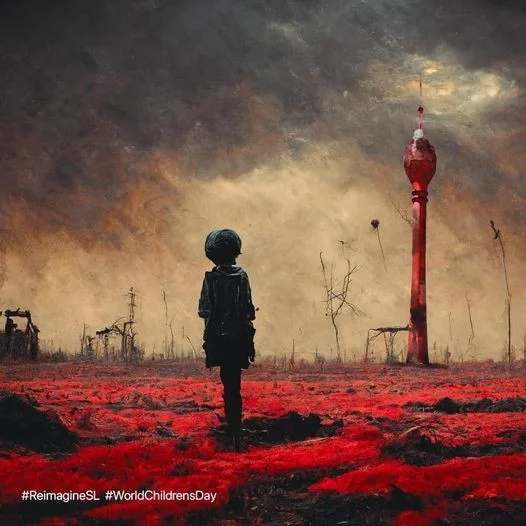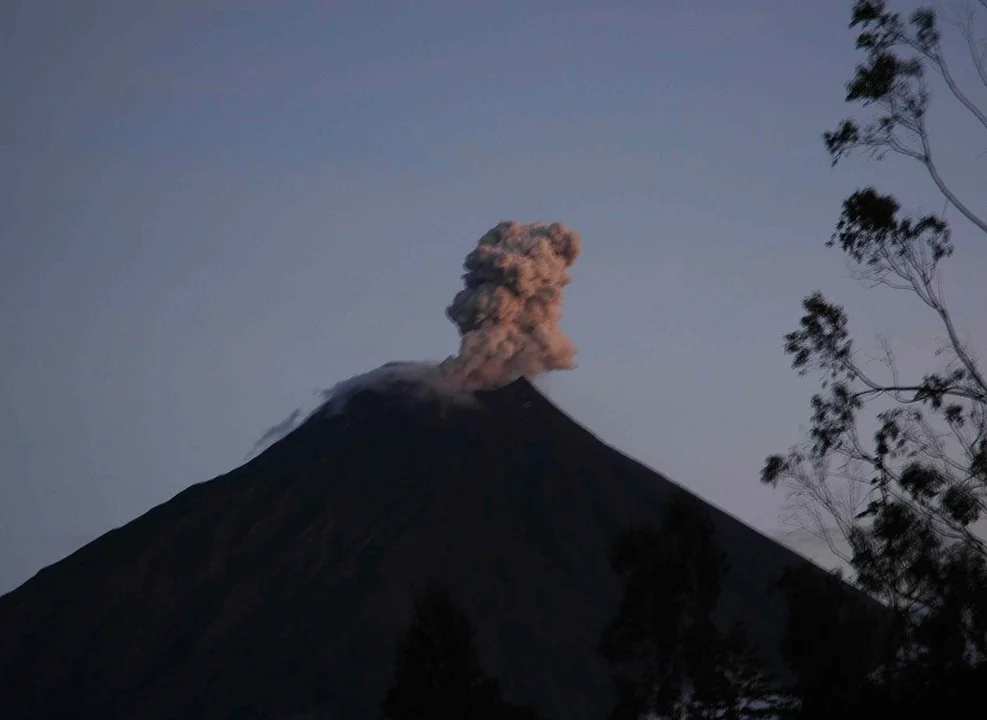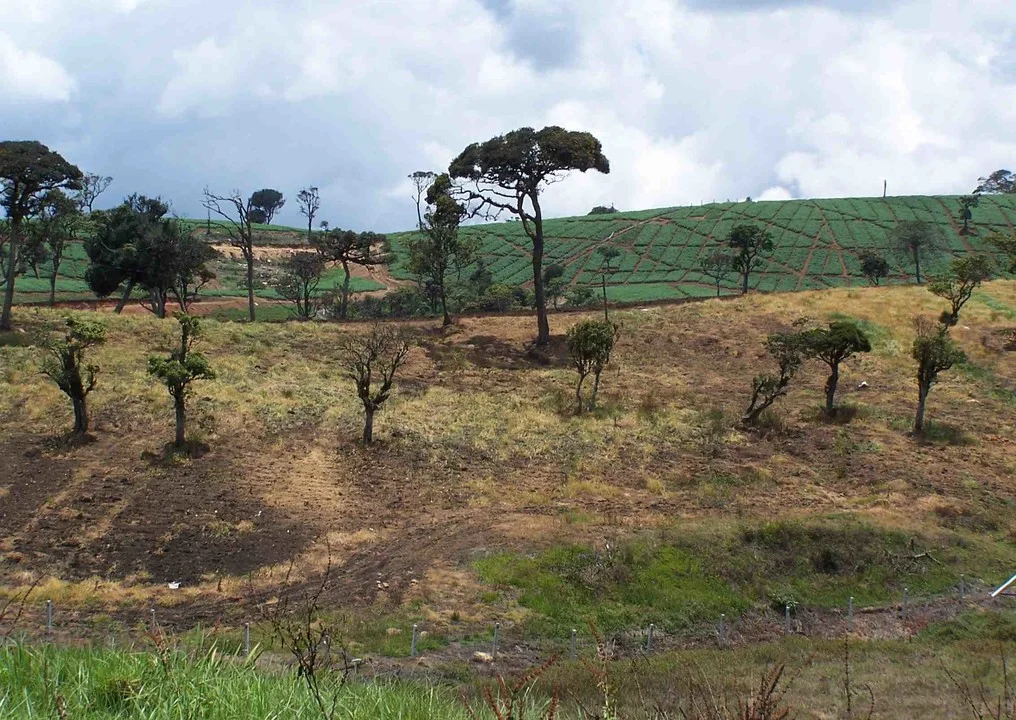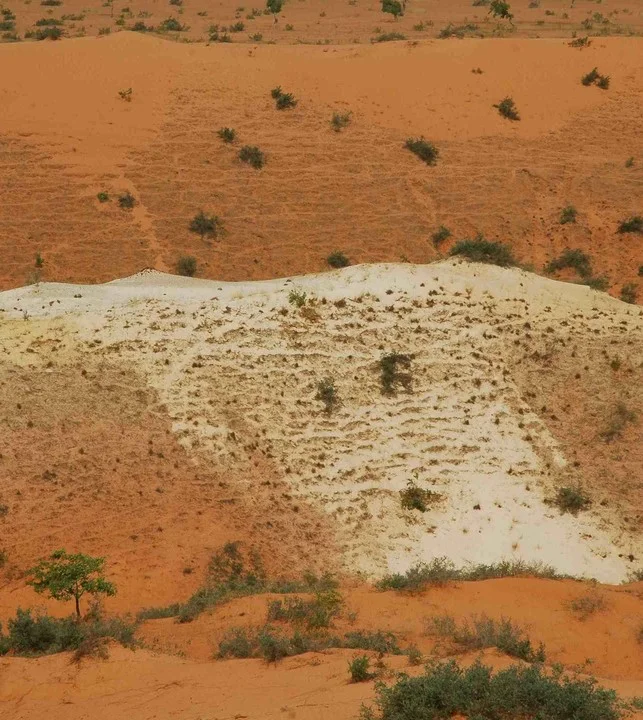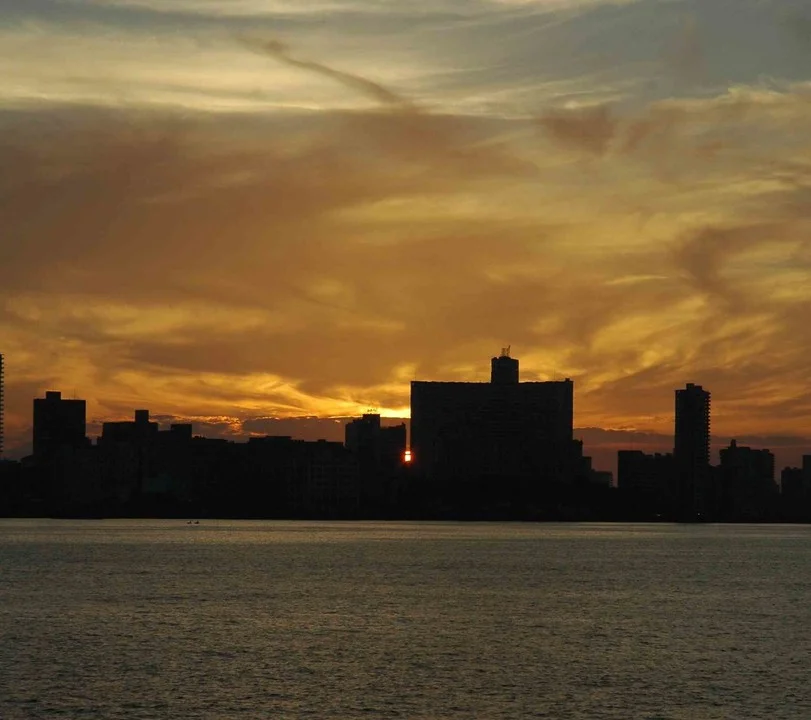The World Meteorological Organization of the United Nations, have just stated that the warmest 13 years of average global temperatures have all occurred in the 15 years since 1997. That has contributed to extreme weather conditions that increase the intensity of droughts and heavy precipitation across the world, it said. “Our science is solid and it proves unequivocally that the world is warming and that this warming is due to human activities,” WMO Deputy Secretary- General Jerry Lengoasa told reporters in Durban. This view, articulated by a responsible organization should be recognized and acted upon by society at all levels. Today, Temperatures over 40°C and even 50°C are becoming increasingly frequent in many parts of the world, posing a major threat to human health and well-being.
While it is an undeniable fact that global temperature and atmospheric concentrations of carbon dioxide are interrelated. The question is when was it initiated? Once a change is initiated, that there exists obvious feedback mechanisms that keeps driving the process, until a regulatory mechanism, such as glaciations, intervenes.
Thus the geologic past is marked by a constant pattern of dry regimes with the water locked up as glacial ice alternating with wet regimes awash with unlocked glacial water. The oscillation from one state to the other involves massive heat transfer processes and accounts for the phenomena of global warming and cooling.
There is debate, certainly on the frequency and amplitude of the changes before us and of the causes that drive such changes. However, if there is one unifying feature to the debate it is that: ‘There is a change in the climate.’ This change is already affecting both the quality of human life and quantity of glaciers the world over. A result of melting land glaciers will make the ocean levels will go up. Models looking at the affect of an 5 – 6 inch rise in sea level over the next thirty years suggests 16 -34 million environmental refugees, depending on the preparedness of the affected regimes.
The global effort on addressing the problems of climate change is also hampered by the fact that the IPCC is consisted only of people who are nominated by their Governments. Commenting on this feature Paul Reiter of the Pasteur Institute says, “Its Governments who nominate people, you will find in many chapters that there are people who are not scientists at all”. This has allowed such fundamental scientific and economic realities such as differences between biomass carbon and fossil carbon to become blurred. One obvious result is that, there is no differentiation of value between these two pools in current carbon accounting by the IPCC. Until this reality is recognized, disjointed markets will prevail.
The UNFCC itself is a lame duck, it is still unable to recognize or identify the difference in value of carbon originating from biotic sources and fossil sources. This fact is commonsense; that while a diamond, petroleum, a lump of coal, piece of wood or piece of fruit is comprised of carbon, they are not the same, and they have different values. The carbon dioxide that emanates from each by burning is also different. The carbon dioxide from biotic carbon will always have the carbon isotope C14, while carbon dioxide from fossil carbon will never contain C14. In time, these differences span millions of years.
If these facts reflect common knowledge, where most high school children are already aware of these facts, why has the UNFCC chosen not to ‘see’ that there is a value and temporal difference between biotic and fossil carbon cycles? A cynic might say that some ‘scientists’ are in the pay of the energy industry.
In the meanwhile, apart from the innumerable conferences and workshops that we could have, what should we do in Sri Lanka? This question has come sharply into focus with the news that Russian scientists have discovered hundreds of plumes of methane gas, some over 1,000 meters in diameter, bubbling to the surface of the Arctic Ocean. Methane is about 20 times more powerful than carbon dioxide as a greenhouse gas. Dr.Igor Semiletov of the Russian Academy of Sciences stated in a recent interview “ Earlier we found torch-like structures like this but they were only tens of meters in diameter. This is the first time that we’ve found continuous, powerful and impressive seeping structures, more than 1,000 meters in diameter. It’s amazing.”
All this points to the need for immediate action. Landscapes are slow to respond to rapid changes. The effect of the increase in storm force was apparent all last year. By now we should have had some national adaptation strategies. Yes, there has been a plethora of conferences around the subject, but what do I do if my drinking water runs out? What do I do if there is salt intrusion into my field? How do I deal with sudden windstorms ? If the years spent on discussing adaptation had borne any fruit, we would now be seeing public education programs on climate change preparedness by now.
So we wait with hope for information from the Climate Change Secretariat on the range of adaptation strategies that we could use in our respective professions in Sri Lanka. But it would behoove us to begin adaptive field studies with our farmers now, based on the predictive models that have a systematic data updating function. The Climate Change Secretariat needs to coordinate all agencies dealing with natural resources, in order to develop functional models for adaptation. From the signs about us we know will have to face the oncoming changes, we need a national plan that informs the public on how we should prepare.
Carbon dioxide is not the only contributor to warming on the planet; there is Methane, Oxides of Nitrogen, water vapour etc. In the atmosphere water vapour accounts for 60-80% of its natural greenhouse effect. Water vapour has been the most dominant greenhouse determinant for the atmosphere and has probably been so over the last four billion years.
In terms of water vapour, forests account for some 48% of all terrestrial evapotranspiration. Thus the loss of forests worldwide, through a climate or biological event, could result in initiating changes in the climate system. As Walter Jehne of the CSIRO states, “It follows that the destruction of up to 80% of earth’s primary (old growth) forests by humans during industrialization could have resulted in a marked loss of the natural cooling capacity and therefore increased global warming.” The deforestation of the planet could very well have been the trigger that has pushed us along the current course.
Sri Lanka was no stranger to the process, forests that remained largely inviolate since their time of formation was felled and destroyed within a period of two hundred years. The natural cooling capacity of the Island was reduced by over 80%. This conversion of the massive forests into carbon dioxide would also have been a significant contribution to increasing carbon dioxide concentrations at that time.
Could the massive rates of deforestation and the removal of the cooling factor that initiated the warming trends that were then amplified by the increases in carbon dioxide as a consequence of the industrial revolution? This process being amplified through the burning of fossil fuels. The Vostock Ice core data looking at past atmospheres seems to suggest such a scenario.
The most obvious way is to address the problem is by reducing reliance on fossil carbon as an index of human development, but there may be other ways as well. One interesting possibility requires us to go back to the forests.
Forests produce vast quantities of Cloud Condensation Nuclei (CCN) that enable the condensation of clouds in the atmosphere. Clouds occur in many states, from the thin haze clouds precipitated by pollution and dust to the thick cumulus clouds precipitated by forests and oceans. Each type provides a certain degree of shading from solar radiation, a phenomenon termed albedo or, “the amount of incoming solar radiation reflected back into space”. The albedo of the planet determines the amount of sunlight reaching the surface,
the amount of sunlight reaching the surface in turn determines the heat of the atmosphere. The mean value for reflecting solar radiation back into space by cloud albedo is about 30%. The cooling effect of this action is so great that a 1-2 % increase in the albedo of the planet would be enough to reduce the warming effect of current CO2 levels back to early-industrial levels. Creating a 1% cooling by albedo can help definitely stabilize the climate.
Restoration of the cloud creating potential of terrestrial ecosystems has to be seen as a critically important activity and the financial instruments designed to mitigate the effect of global warming must recognize this potential. This means designing and implementing long maturing, multi age, and multi species systems that mimic or are analogous to the natural mature ecosystem. Hopefully, our Climate Change pundits will pay attention to these facts.
Because, Sri Lanka, is an oceanic island with a central mountain mass reaching 2000 meters surrounded by an historically created water reservoir complex of over 30,000 units, we are ideally poised to respond and adapt to the oncoming climate crisis. Can we become sensitive to the realities and potentials of this nation in facing the changing climate and use these potentials to buffer our population against the oncoming impacts? or will it be back to bombastic statements, conferences and foreign trips leaving us wondering what we should be doing to face the oncoming crisis ?
Development
Having a colonial past, our history is littered with carpetbaggers, seeking to sell some new snake oil to the hicks. They peddle the ideas that traditional values are old fashioned and the concept that ‘newer or more is better’, irrespective of the social repercussions of such action. Sadly, we seem to be heading into a neo-colonial situation again by being pushed into economic servitude through irresponsible borrowing. The two clear changes that are wrought by such concepts are, a gain, economic or social to the purveyor and the second, a definite dependency upon consumer items being promoted for a feeling of wellbeing or achievement by adopting these ‘modern values’.
This new cultural identity that was sold to us, was massive urbanization with mega cities, casinos, airports, ports and trading malls. The central idea being that industrial growth would bring salvation to the rural sector, all this activity being powered by fossil fuels. Today, this vision has been exposed to be dangerous and hollow, after chasing the fossil dragon for almost half a century, when we were addicted, suddenly, the ships stopped coming. Standing in lines for days, exhausted to the point of death, we are in the throes of addiction withdrawal. Reliant on fossil fuels to maintain the economy and basic living comforts, the sudden withdrawal of oil, coal and gas deliveries has exposed the weakness and the danger of this path of ‘development’ driven by fossil energy.
The movement of a country with traditional non-consumptive values, into a consumerist society based on fossil energy tends to erode these values rapidly. Often, we are told that this is a necessary prerequisite to become a ‘developed country’, but this need not be so. Develop certainly, but we need to address that fundamental flaw stated in 1979. We need to wean ourselves away from the hydrocarbon-based economy to a carbohydrate-based economy. Which means moving from a fossil fuel-based economy to a renewable energy-based economy. We could then consider ourselves not only developed but also an example of a responsible Global Citizenry.
The basic problem with the current economy is the ease with which operators can dump the cost of negative externalities generated by burning fossil fuels to the Global Commons and not be held responsible for such action. In fact, much of the current value realized by the existing economic system, is achieved by externalizing (ie. not paying for) the negative effects (externalities) of their actions.
This was addressed by the Sri Lanka Country Statement that was presented at the COP21 in Paris. It stated .
“We are aware of the great difference in carbon dioxide that is emitted from biological sources and carbon dioxide emitted from fossil sources. One has sequestered rates measured in thousands of years while the other in millions of years. Yet the cost is still the same.”
The myth that fossil burning can be sequestered by trees was exposed at that time. Yet today ‘Carbon Trading’ is still being pursued and encouraged, in the full knowledge that the trade is based on the ability to ‘launder’ fossil carbon into the biotic carbon cycle. To negate the action of fossil carbon, it must be locked up for similar periods. As we go into COP 28 There must be a clear understanding of carbon swaps and article 6 programs in the Paris Agreement, so that the carbon trading programs will not become a way to release more fossil carbon stocks into the Global Commons. Just as there are many ways for the underworld to ‘launder’ their ill-gotten gains into the economy, without paying taxes, there will be many ‘creative’ ways by which fossil Carbon is smuggled into the living world without paying for cost. We must be vigilant that Article 6 should not be used in this way.
Water
There is another aspect of Climate Change that we should inform ourselves of, in the burning of fossil fuels it is not only Carbon Dioxide that is formed, a great deal of water is produced as well. Burning fossil fuels releases both ‘new’ Carbon Dioxide and ‘new’ water vapor into the atmosphere. But unlike the other gasses in the atmosphere only a constant level of water in the form of gas can be maintained as water vapor, it will convert to liquid water at some point. When water vapour condenses as water it releases heat at the rate of 2442 Joules per gram.
Considering that currently 35 billion barrels of oil and a similar volume of coal and gas is burnt per annum, a release of about 16,800 billion liters of water is added to the atmosphere. Thus the energy released by the condensation of the new water generated by the combustion of fossil fuels adds up to a staggering 410,256,000,000,000,000 joules of energy, about half the energy released by the volcano Krakatoa or a as much as large nuclear device.
The energy equivalent of a very large nuclear device is released each year into the atmosphere by the condensation of the water vapor created by burning fossil fuels. This can make dramatic changes to the local climate. Cyclonic activity is driven by heat differentials in the atmosphere, the heat of condensation of the water vapor produced by the burning of fossils could help power such phenomena.
The increase of water vapor in the atmosphere is also facilitated by a warming climate, warm air holds more water. A larger volume of water held in the atmosphere also means larger raindrop size. The larger liquid water content causes the raindrops to collide and coalesce during the falling process, which increases the mass-weighted mean. With increasing size, the fall velocity increases and the pressure on the bottom increases causing the raindrop to flatten and even develop a depression and the maximum speed a given drop can reach during its fall, its terminal velocity, increases as the drop size increases. Thus, the greater the speed and mass of the drop, the greater the force of impact. The erosive force of such rain in uncovered soils lead to the landslides and soil instability.
Such an increase in rainfall is already being experienced in our hills. Land management must ensure that no large area of land is left open to the erosive rains of the future, further in identified erosion prone areas, annual crops should be discouraged and perennials promoted. The action of water on our landscapes should become an area of concern. The recent flooding events the world over is an indicator of the destructive force of future storms. Flood mapping is a urgent need.
Sri Lanka is an oceanic island with a central mountain mass reaching 2000 meters, to trap the rainfall and drain it radially in 103 river basins. The mountains are surrounded by an historically created water reservoir complex of over 30,000 units, created over a span of two thousand years. They could form the basis of an adaptation strategy to respond to a water stressed climate future. Unfortunately, it is estimated that over 90% of these rivers are polluted. In a climate compromised future, water will be a critical determinant of national security. Climate change will bring water insecurity, we need to reforest the upper catchments of these river systems, and restore the minor tank systems the country as a critical strategy towards water security.
As an oceanic island we also have to be ready for the impact of sea level rise Global mean sea level has risen about 8–9 inches (21–24 centimeters) since 1880. The rising water level is mostly due to a combination of melt water from glaciers and the expansion of seawater due to temperature. Between 1901 and 2018, the global mean sea level rose by about 20 cm (or 8 inches) projected to rise, on average, 10 – 12 inches in the next 30 years (2020 – 2050). Current data suggests that this might be accelerating. A rise in sea levels will primarily affect coastal agriculture because there will be a rise in salinity that will make many areas toxic to our traditional rice varieties. However, there are many countries like Bangladesh or China that have salt resistant varieties. The rice breeding institutions should begin work on developing seeds stocks of salt tolerant varieties as a part of the climate adaptation strategy. This is the direction we require urgently to begin developing a robust climate strategy.
We now know that the ‘Oil and Coal is development’ mantra, has almost destroyed the climate, created the polluted air we are forced to breathe and put us in a dependency trap where we will always have to buy fossil energy to keep our lights on. The challenge is to develop a future not reliant on fossil energy. A future where we do not contribute to the destruction of our life support system as ‘development’. We have to look for new technologies, new ways of creating wealth that do not compromise the future, without fear. As Plato said : ‘the real tragedy is not when the child is afraid of the dark, it is when men are afraid of the light!’
Oxygen
Another largely unaddressed fact that frames Climate Change is the fact that global Oxygen concentration is falling. The two graphs, one from the US and the other from Australia demonstrate that this loss is global. The only process that can add free molecular Oxygen into the atmosphere is photosynthesis, carried out by leaves of plants and phytoplankton of the ocean. Given such a significant impact on the Global Commons of atmosphere and given the fact that a warming ocean holds less Oxygen. Understanding the role of Oxygen is important in climate change.
It is a fact that the sustainability of Oxygen production is being endangered by the fossil driven economy. The expansion of fossil energy based industrial farming at the expense of vast regions of forests not only destabilise the atmosphere by accelerating global warming, it also removes the very basis of life by burning biologically created Oxygen without paying for its replacement. Around 26 million tons of Oxygen is used to maintain the current rate of global consumption of oil, about 90 million barrels of oil per day. It would require over 225 million trees working for one year to produce an equivalent amount of Oxygen.
The signs are all around. A recent study on the levels of Oxygen in the ocean found that the oceanic Oxygen levels decreased by 2 % over the last 50 years. On land, the font of Oxygen are the leaves of trees. Another study published in the journal Nature suggests that 15 billion trees are cut down each year and the global tree count has fallen by 46% since the beginning of human civilization.
Anthropogenic fossil fuel combustion is the largest contributor to the current O2 deficit, which consumed 2.0 Gt/a in 1900 and has increased to 38.2 Gt/a by 2015. This way, approximately 100 Gt (gigatons) of O2 would be removed from the atmosphere per year until 2100. At an average, a human, needs about 750kg of Oxygen per year. All of humanity consume about 7 Gt per year. The trajectory is disturbing. Sri Lanka, in the Country statement to COP 21 suggested a solution, it stated:
We are aware that the critical Ecosystem services such as; production of Oxygen, sequestering of Carbon, water cycling and ambient cooling is carried out by the photosynthetic component of biomass. This is being lost at an exponential rate, due to the fact that these Ecosystem Services have not been valued, nor economically recognized
As the inception of all ecosystems begins with Primary Productivity, its first measured outputs are termed Primary Ecosystem Services (PES). These are the actions of photosynthesis in a leaf. These actions are, Oxygen generation, Carbon Dioxide sequestration, water cleansing and ambient cooling.
A New Way Forward
This suggests a way forward, recognizing the value of PES can provide a huge economic boom, it also creates an incentive for the public to participate in the essential work of environmental repair. There are other benefits in recognizing the value photosynthetic biomass as the proxy for PES. Photosynthetic biomass can retain value only as long as it is living. – A leaf on a tree, for instance, has value only as long as it is carrying out the activity of photosynthesis and producing PES, pluck that leaf and the activity ceases, as does the value. – The economy will, for the first time begin to put a value on life. Such an economy will increase photosynthetic biomass everywhere and render that area rich in environmental services as well in economic opportunities. It will change urban – rural relations into a more equitable and sustainable state and rapidly increase the biomass capital of the planet locking up Carbon Dioxide.
The initial ideas for marketing the growth of photosynthetic biomass was presented at the Forestry Congress in Havana, Cuba in 2011. There would be an increase of Oxygen generation, Carbon sequestering and water cleansing, throughout the planet. Additionally, because the degraded ecosystems around the planet offer the space where a large amount of biomass can be gained and as these areas are also home to the world’s rural poor, these degraded ecosystems have great growth potential for generating photosynthetic biomass of high value and generating wealth for its occupants. If the restoration of these degraded ecosystems to achieve optimal photosynthetic biomass cover becomes a global goal, the amazing magic of photosynthesis could indeed help change our current dire course, create a new paradigm of growth and make the planet more benign for our children. There is capital to power such activity. The current estimated annual value of ecosystem services is US$16–54 trillion. Living photosynthetic biomass is an ideal substance to capitalize it.
Yet currently, it is only one product of this photosynthetic biomass, sequestered carbon, usually represented by wood/timber or fruit and vegetable that is recognized as having commercial value in the market for mitigating climate change. The ephemeral part, the leaves, are generally ignored, yet the living photosynthetic biomass in terrestrial ecosystems, is component that needs a value placed on it for its critical ‘environmental services’.
One suggestion address the problem is to create process that create positive externalities and place value on things that externalize their input into the Global Commons, This process of ‘giving back’ or externalizing the output of contracted entities are valued and recorded. Each unit of the system is measured for its production of contracted Primary Ecosystem Services (C-PES) which are the products created by photosynthetic biomass, Oxygen, Carbohydrate and clean water. Recorded over time, these products protect the health and sustainability of a myriad of natural ecosystems on terrestrial landscapes. The transaction history maintained as a certificate or on a blockchain, will create wealth by monitoring and recording the transaction values to the Global Commons.
The Sri Lankan government has already recognized the value of this approach to the rural sector. Instead of flogging the dead horse of fossil energy based growth as ‘Economic Development’, can we respond to the call for a change in our systemic thinking, by appreciating the value of photosynthetic biomass and become the first country in the world to propose setting such a value? The realization of which, will enrich not only our rural population but change the lives of rural people the world over !
The realization of Ecosystem Service values, reflected as rural wealth, has the capacity to reverse the destructive path we are on. It can redirect the current economic dialogue based on profiting from negative externalization, which is leading us to death and destruction, to an economic dialogue based on the profit of positive externalization, leading to life and restoration. One company has already picked up the baton (www.restore.earth), hopefully many more will follow this new path and create a livable future for humanity.
Climate Change is real and will impact all of us one way or another, it is accelerated by the consumption of fossil fuels that drive ‘economic growth’. But there are ways in which we can respond. Many have been known for long time, some are new, but unless we inform ourselves and prepare to respond to the oncoming changes, Climate Change could bring some very unpleasant surprises. The public need to be informed on probabilities and responses on a constant basis, Climate Change means, floods, droughts, fires, rising seas, heat etc. which may happen at very short notice, unless we have response plans for each scenario, some of us will suffer the consequences. This is a full obligation of the authorities to be fully cognizant of the regional climate predictions and advise vigilance in advance. Remember that for agriculture, breeding heat tolerance and salt tolerance is a critical need and cannot be done on a short time frame. By the time the politicians and their bureaucrats prioritize such action, it will be too late. In a future with a rapidly changing climate, we the public, must strive to protect each other. Looking at each other as a wolf does a sheep, encouraged by competitive growth, cannot create a nation nor protect it.

